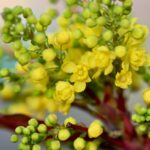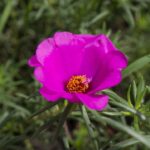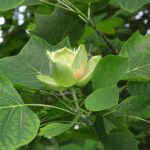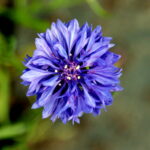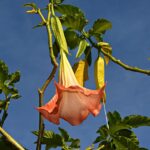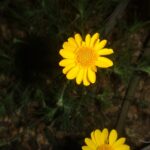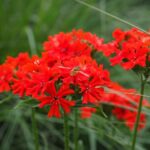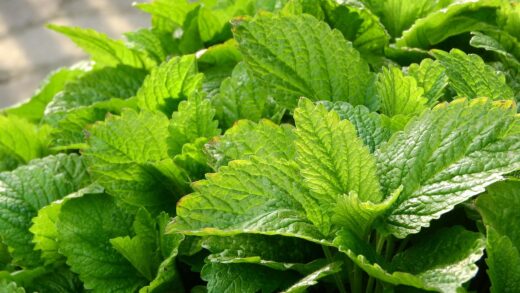Light requirements of the clivia
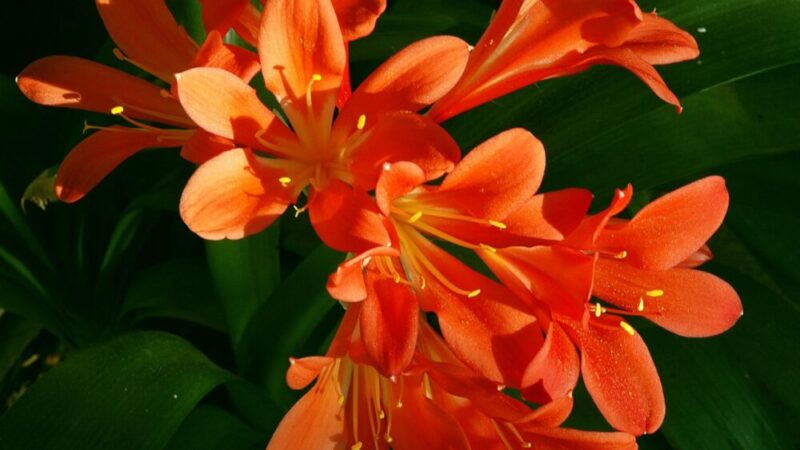
Understanding and providing the correct light is one of the most fundamental aspects of successfully cultivating a clivia. This plant’s lighting preferences are a direct reflection of its origins on the shaded floors of the subtropical forests of South Africa. Unlike many popular houseplants that crave direct sun, the clivia thrives in conditions of bright, indirect light. Getting the lighting right is not just about keeping the plant alive; it is crucial for maintaining the deep, rich green color of its foliage, preventing damage, and ultimately, supporting the energy production needed for its spectacular annual flowering display.
The term “bright, indirect light” can sometimes be ambiguous, but for a clivia, it means placing it in a location where it receives plenty of ambient light for most of the day, but is shielded from the harsh, direct rays of the sun. An ideal scenario is near an east-facing window, where the plant can benefit from the gentle morning sun, which is typically not strong enough to cause harm. A north-facing window can also provide suitable light levels, although the growth may be somewhat slower. The key is to avoid the intense midday and afternoon sun that comes from south or west-facing windows.
The leaves of the clivia are an excellent and immediate indicator of whether the light conditions are appropriate. In ideal lighting, the strap-like leaves will be a deep, glossy green color. If the leaves begin to turn a pale, yellowish-green, it is often a sign that the light is too intense. If the plant is exposed to direct sunlight for even a short period, it can lead to sunburn, which manifests as unsightly bleached, white, or brown patches on the foliage. This damage is permanent, so prevention is paramount.
Conversely, while clivias are known for their tolerance of lower light conditions compared to other flowering plants, insufficient light will also have negative consequences. In a location that is too dim, the plant’s growth will be slow and spindly, and the leaves may become a very dark green but lose their vibrancy. Most significantly, a clivia that does not receive enough light will struggle to photosynthesize effectively and will not be able to store enough energy to produce flowers, even if it is given a proper winter rest period. Finding that perfect balance is the key to a healthy and beautiful plant.
The ideal light exposure
The quest for the perfect location for your clivia ends at a spot that provides consistent, bright, but filtered light throughout the day. An east-facing exposure is often considered the pinnacle of clivia placement. The morning sun it provides is gentle and energizing, closely mimicking the dappled light that filters through the forest canopy in its native habitat. This allows the plant to photosynthesize efficiently in the morning without the risk of cellular damage from heat and intense radiation that comes later in the day. The plant can then spend the rest of the day in the bright ambient light.
More articles on this topic
For homes without an ideal east-facing window, other locations can be adapted to suit the clivia’s needs. A west or south-facing window can be used, but only if the light is significantly diffused. This can be easily accomplished by hanging a sheer curtain to filter the sun’s rays, or by placing the plant several feet back from the window so that it is not in the direct path of the sunbeams. The goal is to illuminate the area around the plant brightly without allowing the sun to fall directly onto its leaves, especially during the peak hours of the afternoon.
It is also beneficial to consider the plant’s growth habit in relation to its light source. Clivias, like most plants, are phototropic, meaning they will grow and lean towards the light. To promote a symmetrical and upright plant with its elegant, arching leaves fanning out evenly, it is a good practice to rotate the pot a quarter turn every one to two weeks. This simple act ensures that all sides of the plant receive equal exposure to the light source, preventing a lopsided appearance and encouraging a more balanced and aesthetically pleasing form.
During the summer months, providing your clivia with a vacation outdoors can be highly beneficial, but the same light rules apply with even greater importance. A spot under a large tree that provides dappled shade all day, or on a covered porch that is protected from direct sun, is ideal. The increased air circulation and natural light can invigorate the plant, leading to robust growth. However, you must be absolutely certain that the location does not receive any direct midday or afternoon sun, as the outdoor sun is far more intense and will scorch the leaves very quickly.
Signs of incorrect lighting
The foliage of a clivia serves as a reliable diagnostic tool for assessing its light conditions. One of the most common and obvious signs of excessive light is sunburn. This appears as irregular patches on the leaves that look bleached, yellow, or even brown and crispy. This damage occurs when the intense solar radiation destroys the chlorophyll in the leaf cells. Unfortunately, once a leaf is scorched, the damage is irreversible, and the blemish will remain for the life of the leaf. If you see this happening, move the plant to a shadier location immediately to prevent further damage.
More articles on this topic
A more subtle sign of too much light is a general yellowing of the foliage. Instead of the deep, rich green of a healthy clivia, the leaves may take on a washed-out, pale green or yellowish hue. This indicates that the plant is receiving more light energy than it can effectively process through photosynthesis, a condition known as photoinhibition. While not as immediately damaging as a scorch, it is a clear sign of stress and indicates that the plant should be moved to a location with less intense light for its long-term health and wellbeing.
On the opposite end of the spectrum, a clivia that is not receiving enough light will also exhibit clear symptoms. The most obvious sign is a lack of flowering. A mature plant that is well-cared for but fails to bloom year after year is often suffering from insufficient light during its growing season, preventing it from storing the necessary energy reserves. The plant may still look healthy, but it simply won’t have the fuel required for the demanding process of producing a flower stalk and blooms, even if you provide a perfect winter rest.
Visually, a light-starved clivia may also develop abnormally long, floppy, or “leggy” leaves as it stretches in an attempt to reach for a better light source. The leaves may also turn an extremely dark, almost black-green color. While this might look attractive to some, it is a physiological response where the plant produces an excess of chlorophyll to try and capture every possible photon of the limited available light. This is a sign that the plant is struggling, and its overall growth will be significantly stunted compared to a plant in optimal lighting.
Light requirements during different seasons
The clivia’s need for light remains relatively consistent throughout its active growing season in the spring and summer. During this period, the goal is to maximize photosynthesis without causing harm, so providing consistent, bright, indirect light is key. This is when the plant is actively producing new leaves and, most importantly, storing the energy that will fuel the following year’s blooms. Ensuring it receives adequate light throughout the spring and summer is a direct investment in the future success of the plant’s flowering.
As the plant transitions into its winter dormancy period, its light requirements do not disappear. Although its growth processes slow down dramatically, the plant is still alive and needs light to maintain its basic functions. The overwintering location should be one that is both cool and provides bright, indirect light. A common mistake is to place the plant in a dark corner of a basement or garage for the winter. While this provides the necessary cool temperatures, the lack of light will weaken the plant, deplete its energy reserves, and can ultimately hinder its ability to flower, even with the cold treatment.
When the dormancy period ends and the flower scape begins to emerge, light plays a role in its development. Bringing the plant back into a warmer, brightly lit location encourages the flower stalk to elongate properly. If the plant is left in a dim location after the bud has formed, the stalk may remain short, and the flowers can end up trapped down within the leaves, a phenomenon known as “blooming in the crown.” Providing good, bright light as the stalk grows ensures it reaches its full, elegant height, displaying the flowers beautifully above the foliage.
It is also worth noting that the intensity and duration of natural light change with the seasons. A location that is perfect in the winter, such as near a south-facing window, may become far too intense and direct during the summer as the sun’s path across the sky becomes higher. Be prepared to adjust the plant’s position throughout the year. You might need to move it further away from a window or add a sheer curtain during the summer months to protect it from the stronger sun, then move it back closer to the window in the winter to maximize the weaker available light.

